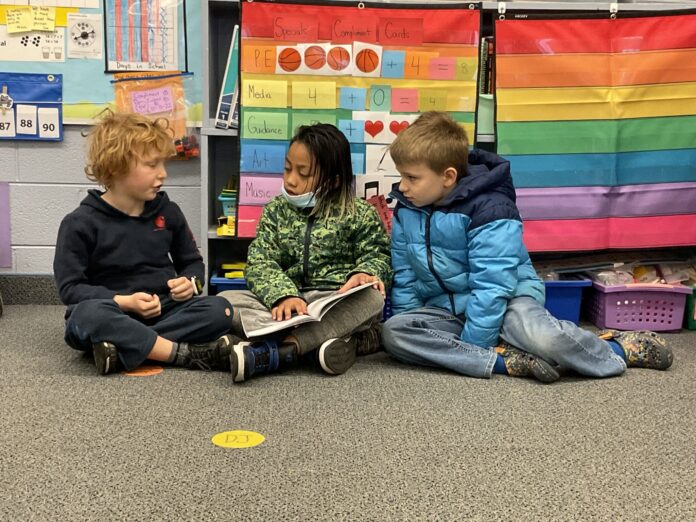When you hear the term “science of reading,” what comes to mind? While it encompasses a wide range of research on effective reading instruction, conversations about the science of reading typically center on phonics and decoding. After completing two years of LETRS training, North Carolina teachers are talking about the science of reading more than ever. We now have tools like orthographic mapping, sound walls, and decodable texts to help our students read words accurately, but what about their understanding of those words?
The importance of comprehension instruction
While state reading test scores have continued to increase following the pandemic, about 50% of students in grades 3-8 still scored below proficient in reading in 2023. So, is decoding the only thing holding them back?
As an 11th-year educator, I used to believe that once students could decode and read fluently, comprehension would automatically follow. However, I’ve come to realize that many students, despite mastering grade-level phonics skills, continue to struggle with reading. These students often fly under the radar because they score “at or above benchmark” on mCLASS assessments, making them ineligible for reading intervention services, yet they perform below proficient on tests like the EOG.
When comprehension difficulties are identified, these students are too often given more test prep in the form of reading passages and answering questions instead of targeted comprehension instruction. While my district provides ample resources for phonics and fluency interventions, there’s little guidance for addressing the gap when a student can decode but can’t comprehend.
Reading comprehension involves constructing an accurate mental model from the words on a page — an essential skill for success in school, careers, and life. According to a report from the Institute of Education Sciences, “Students who read with understanding at an early age gain access to a broader range of texts, knowledge, and educational opportunities.”
Comprehension affects performance not only in ELA, but also in math, science, and social studies, from elementary school through higher education. Moreover, students who don’t understand what they read miss out on the joy of reading and building a love for books.
This highlights the need to prioritize explicit instruction in reading comprehension. Decoding skills are critical, but they are only one part of the equation. With the tools for strong phonics instruction now at our disposal, it’s time for North Carolina educators to shift the conversation toward teaching students to think critically and engage deeply with texts.
How educators can take action
Reading comprehension instruction must go beyond teaching students how to answer questions about a text. Here are several strategies to build comprehension:
Select complex texts
All students should have access to diverse, challenging texts from a variety of genres that challenge them appropriately to facilitate building knowledge and vocabulary over time.
Use research-based strategies
Teaching important background knowledge and vocabulary, text structures, monitoring comprehension, modeling, and thinking aloud are some proven strategies that support building comprehension.
Integrate comprehension across content areas and grade levels
Reading comprehension should not be left to the upper elementary grades or to reading teachers alone. In a paper published by the International Literacy Association, researchers emphasized that “research has supported a simultaneous, rather than sequential, model of reading instruction.” Comprehension should be taught to young readers and applied across all subject areas.
Provide authentic contexts for reading
Reading isn’t just about strategies and standards — we read for enjoyment and to learn new things. Motivate and excite students by providing a meaningful purpose for reading, and align texts and tasks to students’ interests as much as possible.
Offer time, resources, and support
School and district leaders must provide teachers with the resources they need to implement comprehension-focused lessons. This includes reading materials, time for collaborative planning, and professional development on effective reading comprehension strategies.
Reading is more than just decoding words — it’s about making meaning from those words. It’s time to move beyond phonics and decoding to prioritize reading comprehension as part of the science of reading. By emphasizing reading comprehension alongside other foundational skills, we can better prepare North Carolina students to succeed in school and in life.
Editor’s Note: The author used ChatGPT to revise and edit her writing after it was complete, changing some wording and correcting grammatical errors.
